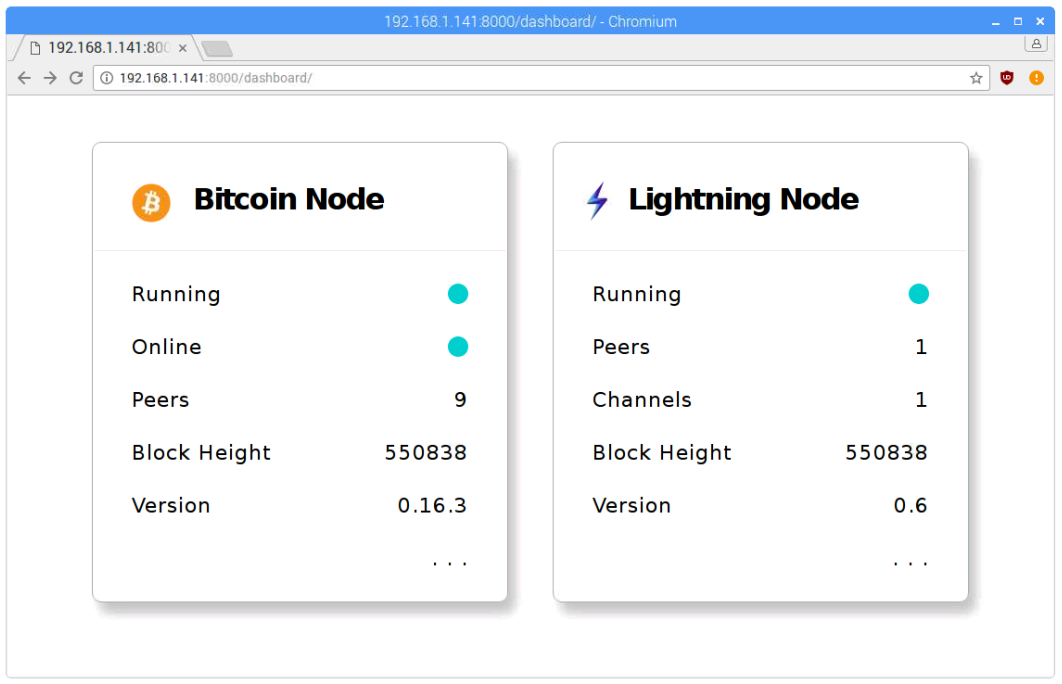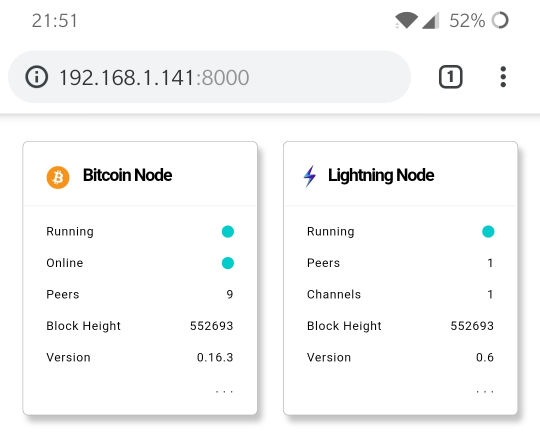| Running | 134 |135 | {% if bitcoin.running %} 136 | 137 | {% else %} 138 | 139 | {% endif %} 140 | | 141 |
| Online | 145 |146 | {% if bitcoin.online %} 147 | 148 | {% else %} 149 | 150 | {% endif %} 151 | | 152 |
| Peers | 156 |{{ bitcoin.peer_count }} | 157 |
| Block Height | 161 |{{ bitcoin.block_height }} | 162 |
| Version | 166 |{{ bitcoin.version }} | 167 |
| 171 | | {{ bitcoin.message }} | 172 |
| Running | 183 |184 | {% if lightning.running %} 185 | 186 | {% else %} 187 | 188 | {% endif %} 189 | | 190 |
| Peers | 194 |{{ lightning.peer_count }} | 195 |
| Channels | 199 |{{ lightning.channel_count }} | 200 |
| Block Height | 204 |{{ lightning.block_height }} | 205 |
| Version | 209 |{{ lightning.version }} | 210 |
| 214 | | {{ lightning.message }} | 215 |
 16 |
16 |  107 |
107 |